Fountains of Istanbul: Flowing heritage of beauty and faith
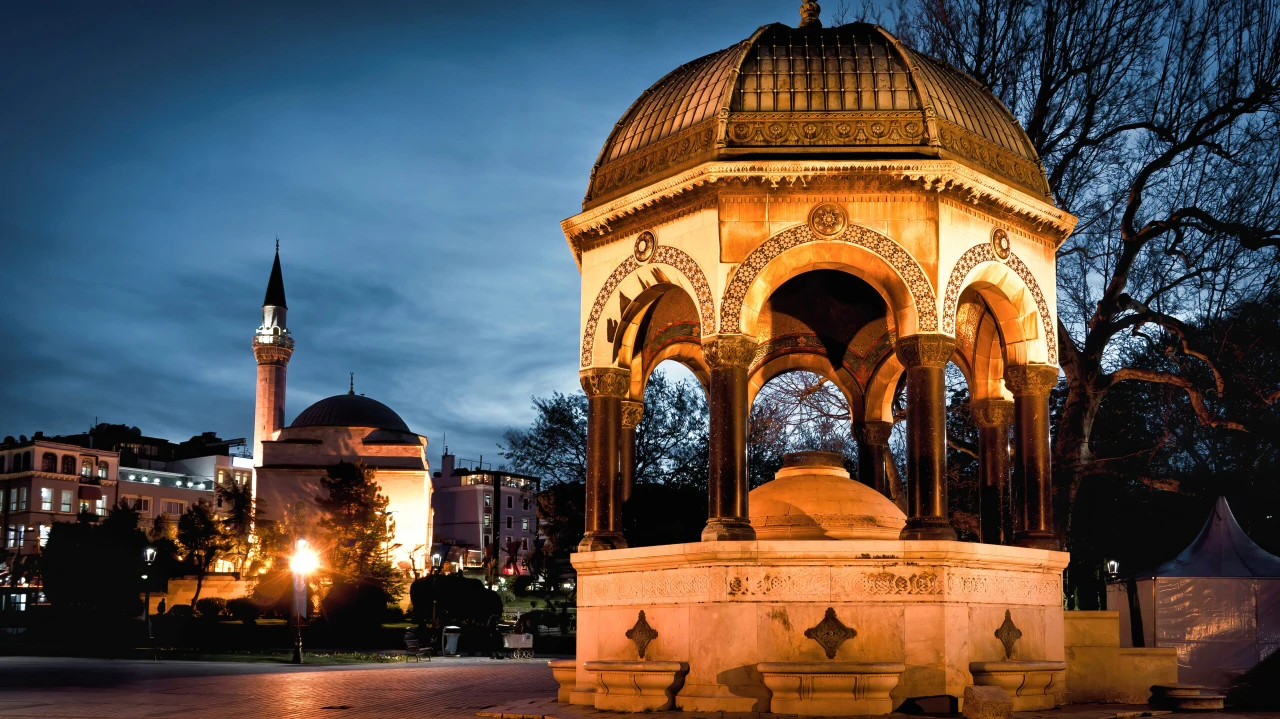 The German Fountain, located in Sultanahmet Square in Istanbul, Türkiye. (Photo via Adobe Stock)
The German Fountain, located in Sultanahmet Square in Istanbul, Türkiye. (Photo via Adobe Stock)
Long before the hustle and bustle of modern Istanbul, the city’s streets were lined with something far more precious than mere architecture. Public fountains, or cesme, once served as the lifeblood of the city, offering both water and a symbol of Ottoman generosity.
These fountains were not just places to quench a thirst; they were acts of faith, beauty, and civic responsibility. Famous fountains like the Beyazit Fountain, the Fountain of Sultan Ahmet III, the Alman (German) Fountain, and the Fountain of Tophane still stand as elegant remnants of this rich legacy. But their story flows from a bold idea, one that began in the heart of the Ottoman court during the reign of Sultan Suleiman I.
Waterways of Istanbul
During a council meeting, Sultan Suleiman I tasked Mimar Sinan with bringing fresh water to Istanbul, a city long challenged by water shortages. Only Grand Vizier Rustem Pasha objected, fearing that better water access would spur overpopulation and food shortages.
Nevertheless, the sultan’s order stood. Over nine years, Sinan led one of the empire’s most ambitious infrastructure projects, reviving ancient aqueducts and building new channels and reservoirs.
The project, costing 50 million akces (old Turkish lira), eventually delivered water citywide, transforming daily life and nourishing the iconic fountains that still grace Istanbul’s streets.
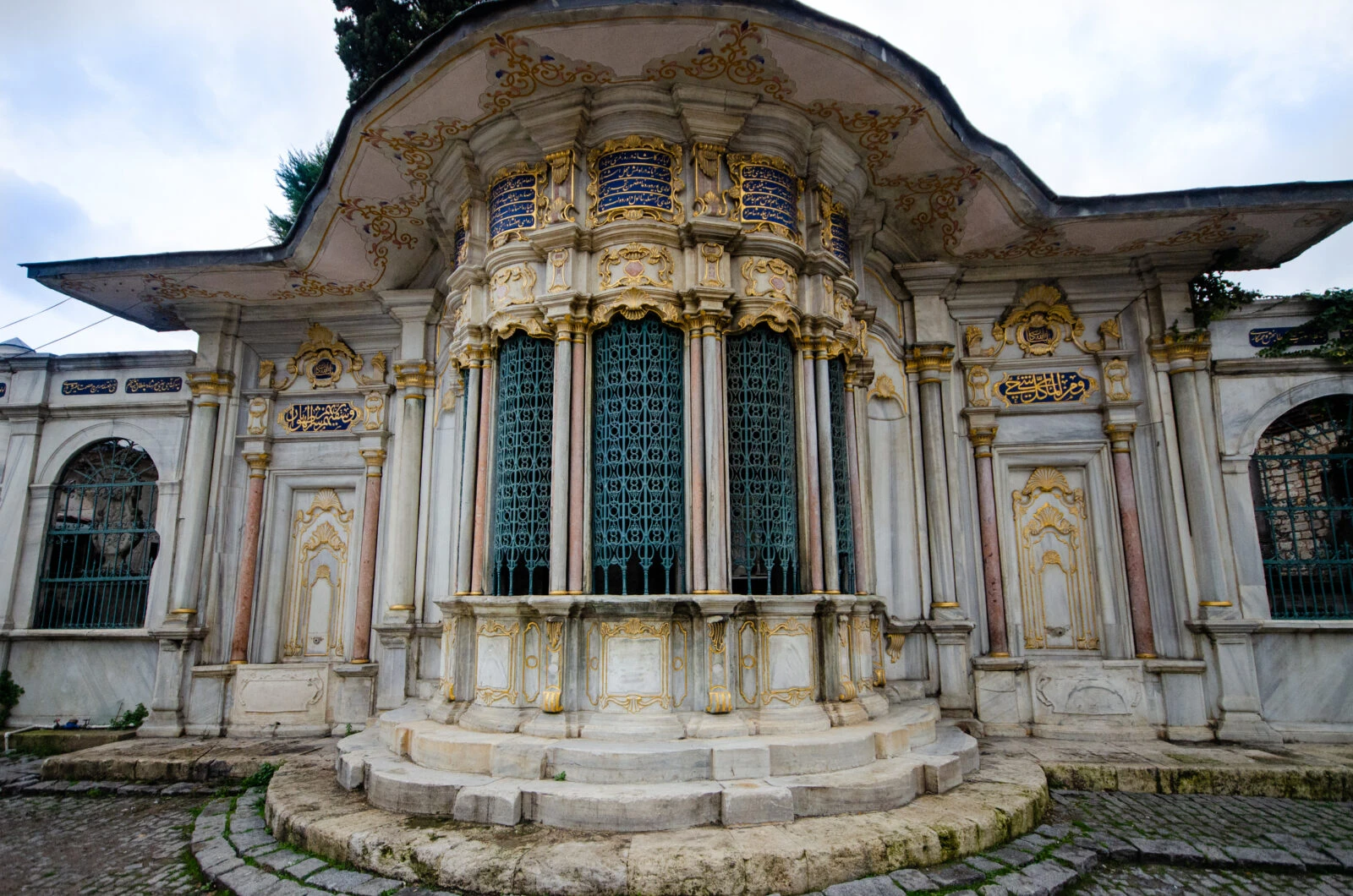
Mihrisah Sultan Fountain: Ottoman elegance at Eyup Sultan
The Mihrisah Sultan Fountain, built in 1799, is located near the Eyup Sultan Mosque in Istanbul. Commissioned by Mihrisah Sultan, the wife of Sultan Mustafa III and mother of Sultan Selim III, the fountain is made of marble and features ornate calligraphy and floral and geometric designs.
It served as a public water source and reflects the charitable nature of the Ottoman royal family. The fountain is a fine example of late Ottoman architectural style, blending functionality with decorative elegance.
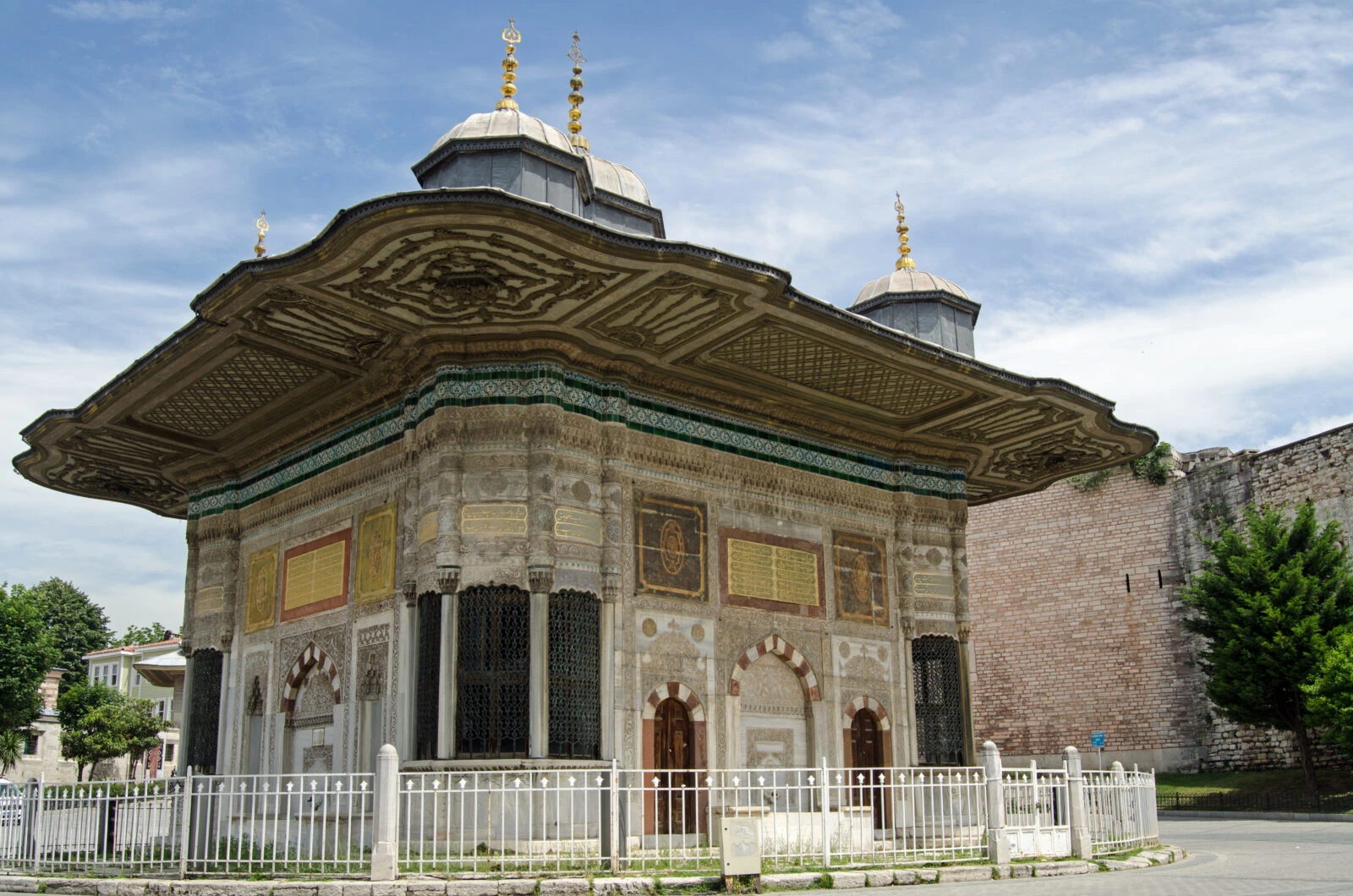
Fountain of Sultan Ahmed III: A jewel of tulip era
Standing between the Hagia Sophia and Topkapi Palace, the Fountain of Sultan Ahmed III stands as one of Istanbul’s most renowned landmarks. Completed in 1728, Sultan Ahmed III, during the Tulip Era, commissioned it at a time of artistic and cultural flourishing. With its baroque influences, it marked a turning point in Ottoman aesthetics.
The structure features richly decorated facades, verses in elegant calligraphy, and floral motifs carved into its stone panels. Built not only to provide water but also to express refinement and imperial pride, the fountain remains a symbol of the balance between beauty and public service in Ottoman urban life.
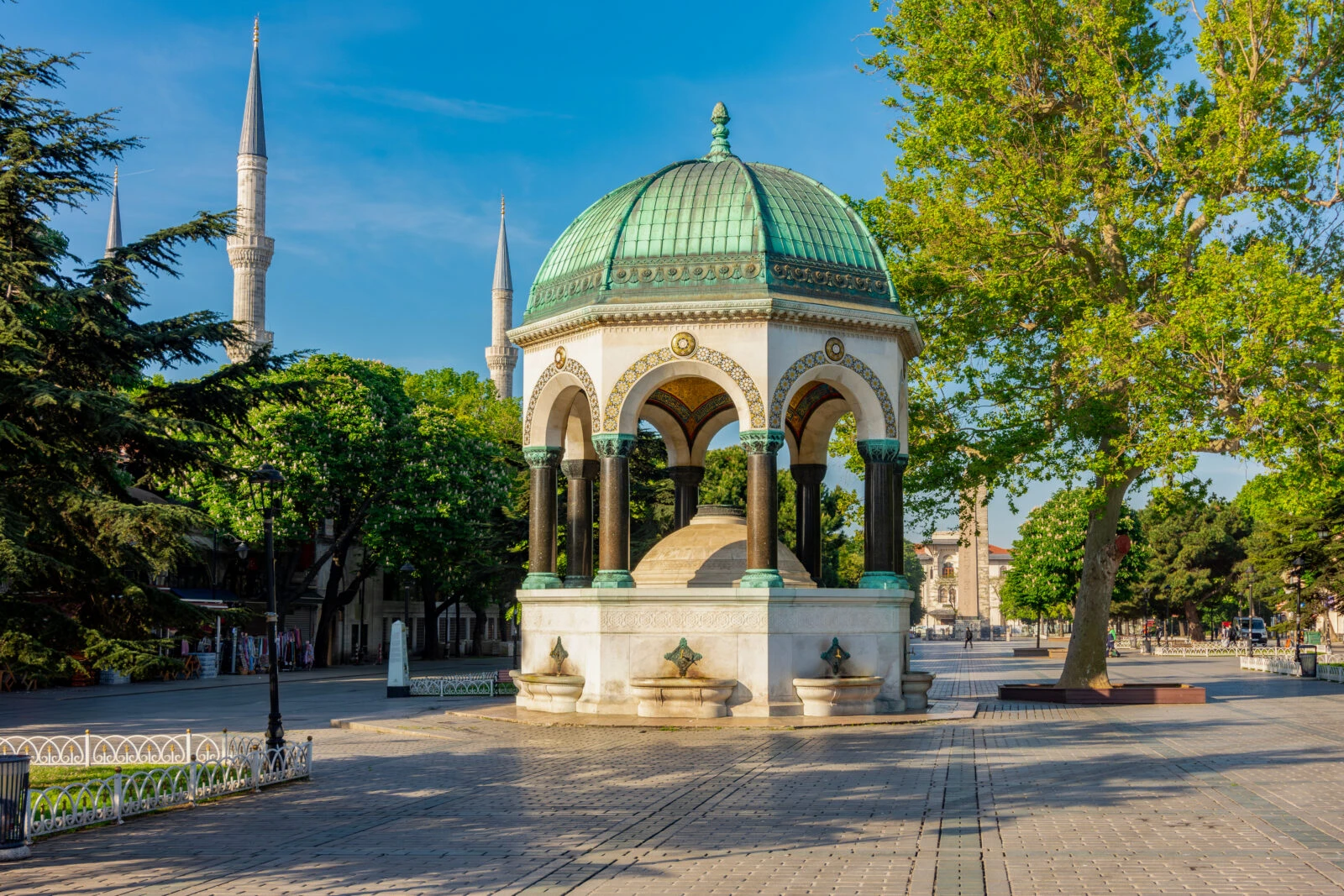
German fountain (Alman fountain): A symbol of diplomacy
The German Fountain (Alman Fountain) stands proudly in Sultanahmet Square, a striking piece of architecture with a fascinating international connection.
It was commissioned to celebrate the second anniversary of German Emperor Wilhelm II’s 1898 visit to Istanbul. Constructed in Germany, the fountain was later shipped in sections and reassembled at its present location in 1900.
The fountain blends Byzantine and Ottoman design elements, with green and gold mosaics, marble columns, and a distinctive octagonal dome.
Its placement near the Blue Mosque and Hagia Sophia underscores its symbolic importance as a gesture of friendship between empires. Today, it draws visitors with its striking form and layered historical narrative.
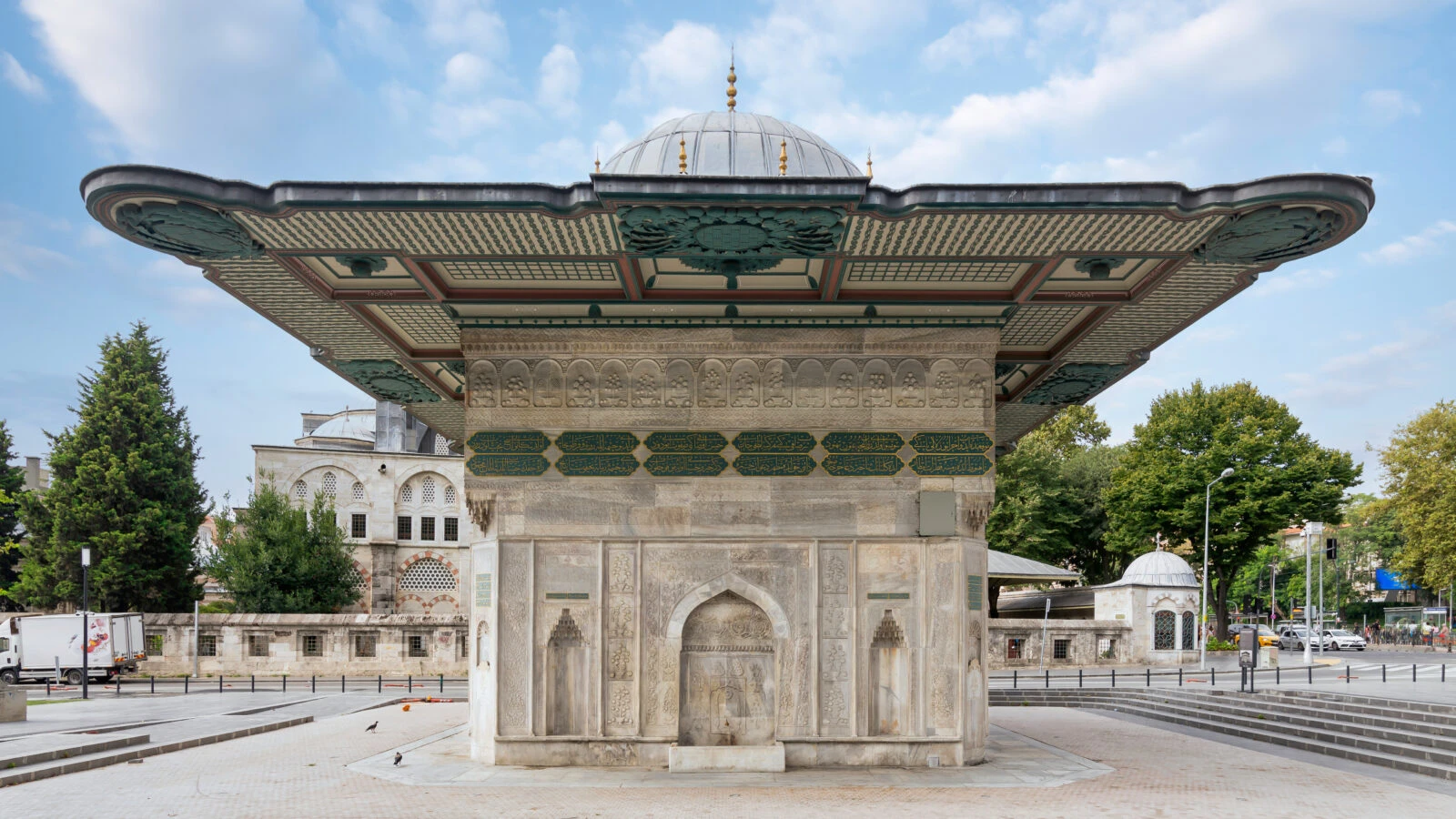
Fountain of Tophane: Baroque masterpiece of Istanbul
Commanding the entrance to the historic Tophane district, this large public fountain was completed in 1732 by order of Sultan Mahmud I Once a hub for Ottoman artillery production, Tophane was a strategically important area, and the construction of the fountain reflected both practical needs and the Sultan’s commitment to urban development.
The Fountain of Tophane features a wide marble façade, richly adorned inscriptions, and baroque details that highlight the stylistic shift of the 18th century. It served as both a watering point for residents and travelers and a visual centerpiece of the district, blending functionality with grandeur.
Legacy that still flows: Istanbul’s historic fountains
Though Istanbul’s modern plumbing has replaced their original function, these fountains continue to tell stories in stone. They are the city’s silent witnesses, offering not just a glimpse into the past but a reminder of an era when the flow of water was an expression of culture, devotion, and imperial ambition.
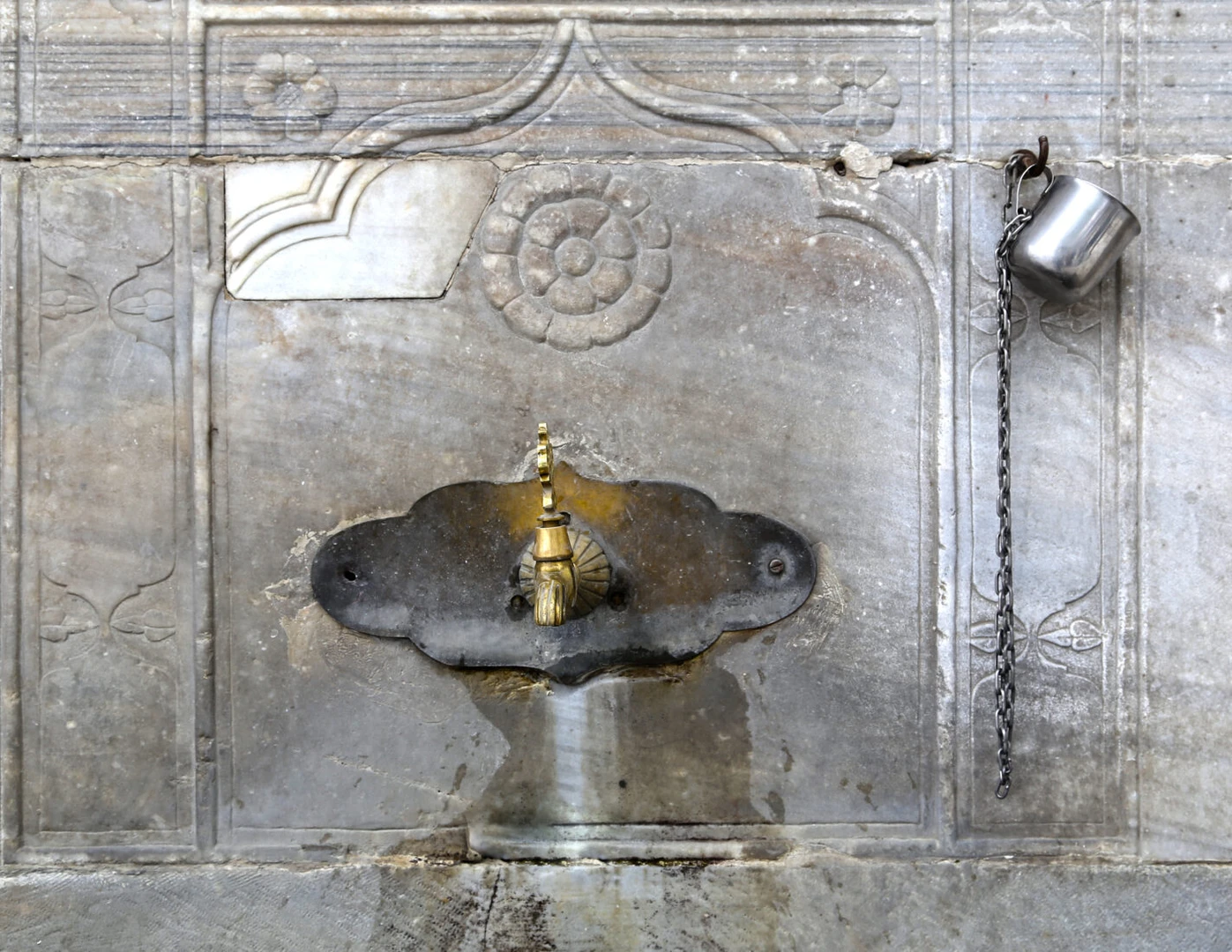
In a city where every corner whispers history, Istanbul’s fountains still echo the era when water was revered, architecture embodied generosity, and each drop reflected the spirit of a great civilization.



